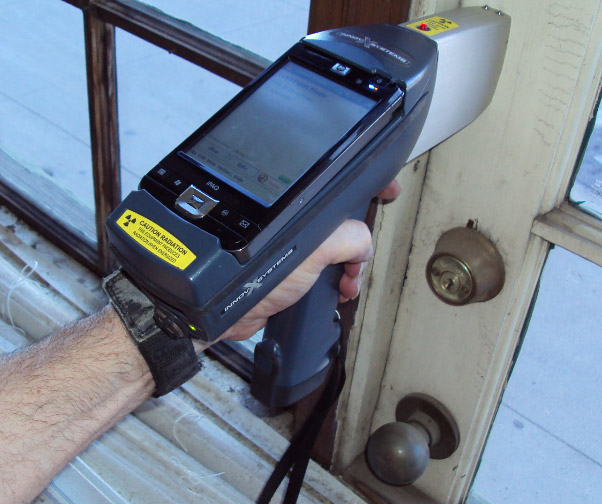Comprehensive Overview on Effective Lead Infraction Elimination Strategies
In the realm of ecological safety, dealing with lead violations requires a precise and organized approach. This extensive overview starts by highlighting the crucial initial steps of identifying lead threats through innovative evaluation and testing approaches. Methods such as XRF analysis and dirt clean tasting are vital in pinpointing contamination sources. The overview specifies on the value of sticking to stringent safety and security methods throughout the removal process, including the use of appropriate PPE and separating affected areas. The subsequent sections guarantee to discuss post-removal confirmation and preventative strategies, making sure long-term security and conformity. Discover the complex information that make these strategies not just reliable but necessary.
Recognizing Lead Hazards
Determining lead hazards is a crucial very first action in mitigating the threats connected with lead direct exposure. Lead, a poisonous steel, can be existing in numerous ecological tools, consisting of paint, dirt, water, and dust.
The preliminary phase in determining lead dangers includes recognizing usual lead resources within the constructed setting. Frameworks constructed prior to 1978 are specifically at risk as a result of the widespread usage of lead-based paint throughout that duration. Furthermore, soil contamination can happen from weakening exterior paint, industrial emissions, or historic use leaded fuel.
One more substantial resource is lead piping and pipes components, which can seep lead right into drinking water. Durable goods such as playthings, porcelains, and imported products may also contain hazardous lead levels. Especially, job-related settings and pastimes involving lead can track contaminants right into homes.
Evaluation and Testing
When attending to lead hazards, efficient assessment and testing are paramount. Preliminary analysis usually entails a visual assessment to identify prospective lead resources, such as weakening paint or polluted dirt.

Dust wipe sampling is an additional critical method, specifically in household settings. By gathering samples from floorings, windowsills, and various other surface areas, this method offers insights right into possible direct exposure threats. Furthermore, soil testing around building boundaries is necessary to detect lead contamination that could position risks, particularly to kids.
Safe Removal Procedures
Upon completing thorough assessment and screening, applying secure elimination treatments is the next crucial phase in dealing with lead hazards. This process makes certain that lead-contaminated products are successfully and safely eliminated, reducing risk to both employees and homeowners. The very first step involves separating the damaged area using plastic bed linen and correct sealing techniques to prevent the spread of lead dirt.
Workers must wear proper personal safety tools (PPE), including respirators, handwear covers, and non reusable coveralls, to reduce exposure. Using specialized tools and damp techniques, such as wet fining sand or using HEPA-filtered vacuum cleaners, minimizes the dispersion of lead fragments. It is important to avoid completely dry sanding or unpleasant blasting, as these approaches can produce harmful lead dirt.
Waste disposal is an additional important part; all polluted products should be firmly gotten and labeled according to EPA and regional regulations. Furthermore, comprehensive cleansing of the workplace with HEPA vacuum cleaners and wet cleaning ensures the removal of recurring lead particles.
Post-Removal Confirmation

Confirmation of successful lead removal, known as post-removal verification, is vital to make sure the safety and security and habitability of the remediated location. This assessment makes certain that all well-known resources of lead have actually been attended to and that no noticeable indications of contamination stay.
Complying with the visual inspection, environmental tasting is performed. This entails accumulating dirt, soil, and in some cases water samples from the remediated location. Approved research laboratories examine these samples to measure lead levels, guaranteeing they drop below the safety limits developed by regulative bodies such as the Environmental Security Agency (EPA)
Additionally, air top quality testing may be executed to identify air-borne lead bits, specifically in situations where comprehensive lead-based paint elimination or remodelling has actually taken place. The results of these This Site tests give measurable information verifying that the lead levels are within permissible restrictions.
Eventually, post-removal verification works as an important checkpoint, validating the performance of the lead reduction efforts and guarding the health and wellness of occupants and site visitors.
Safety Nets and Maintenance

A vital safety net includes the usage of lead-safe certified service providers for any improvement, repair work, or paint activities. These experts are educated in practices that decrease lead dust and debris. In addition, maintaining colored surface areas to avoid her response breaking or peeling off is essential, as deteriorating paint can release lead fragments right into the environment.
Educational efforts targeting home proprietors and tenants concerning the threats of lead and the relevance of reporting any prospective dangers can better enhance precautionary initiatives. Regular cleansing using HEPA vacuums and wet mopping methods can substantially lower lead dust accumulation.
Final Thought
In summary, efficient lead infraction elimination demands a thorough approach encompassing extensive evaluation, exact screening, and rigorous elimination treatments. Making certain safety and security via correct seclusion and individual safety devices stays vital. Post-removal confirmation by means of environmental sampling and air quality testing substantiates compliance with established safety and security criteria. Continuous evaluations and maintenance are essential to minimize future lead dangers, thus safeguarding public wellness and making sure sustained conformity with regulative requirements.